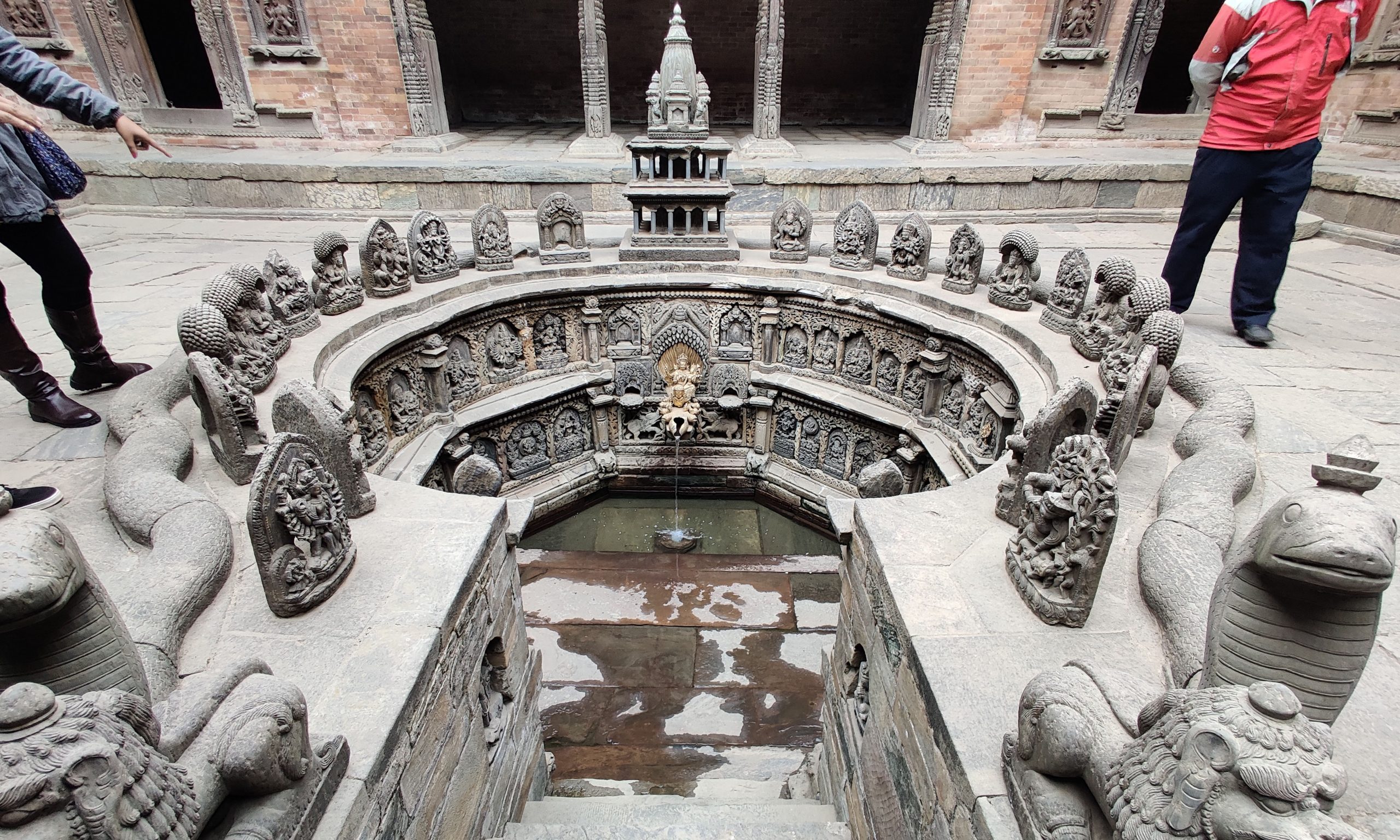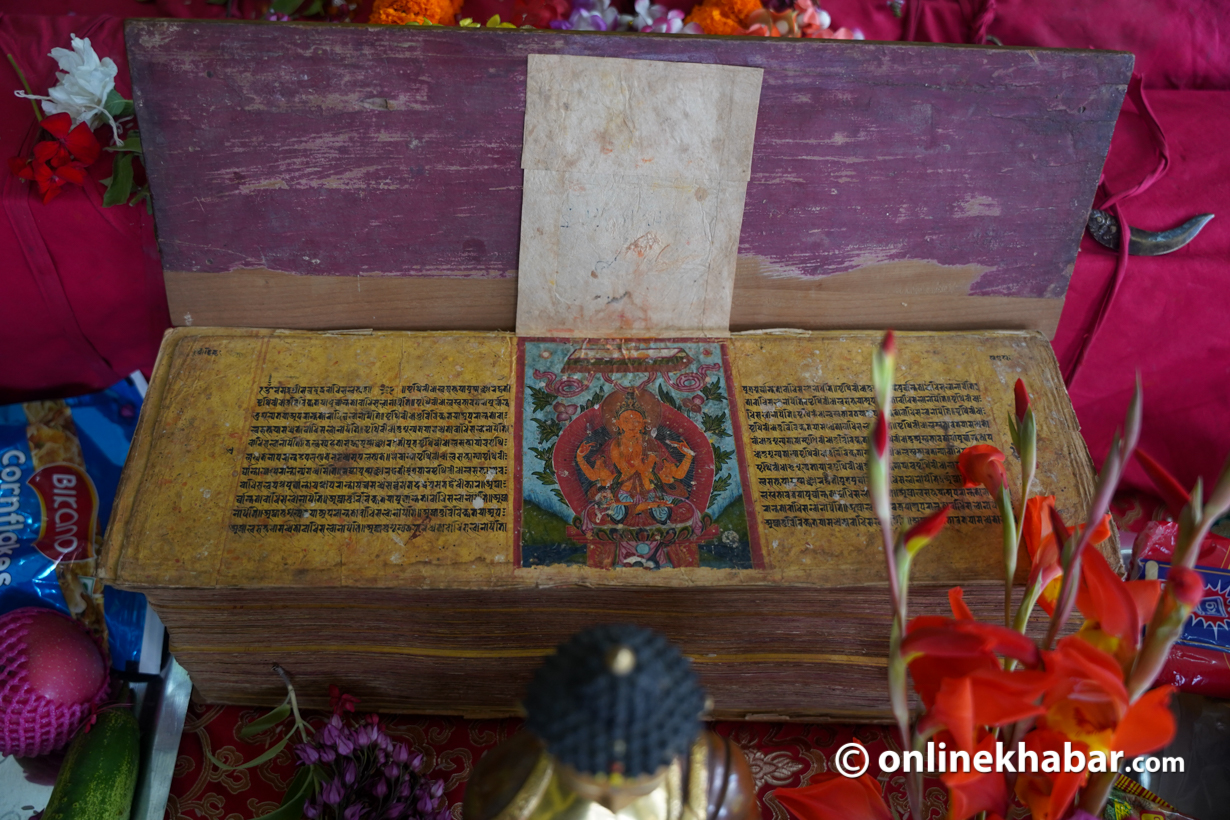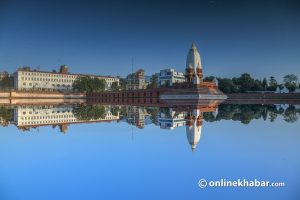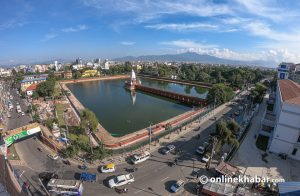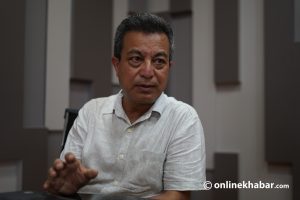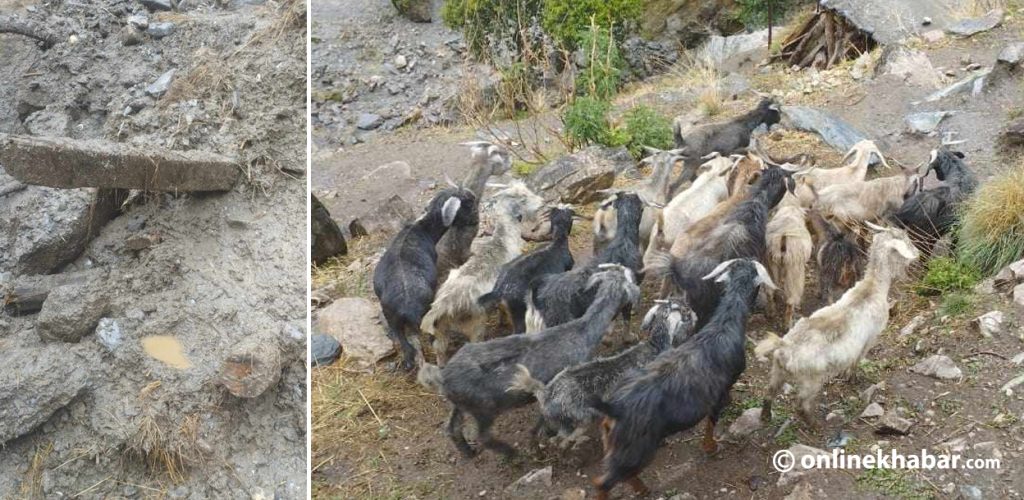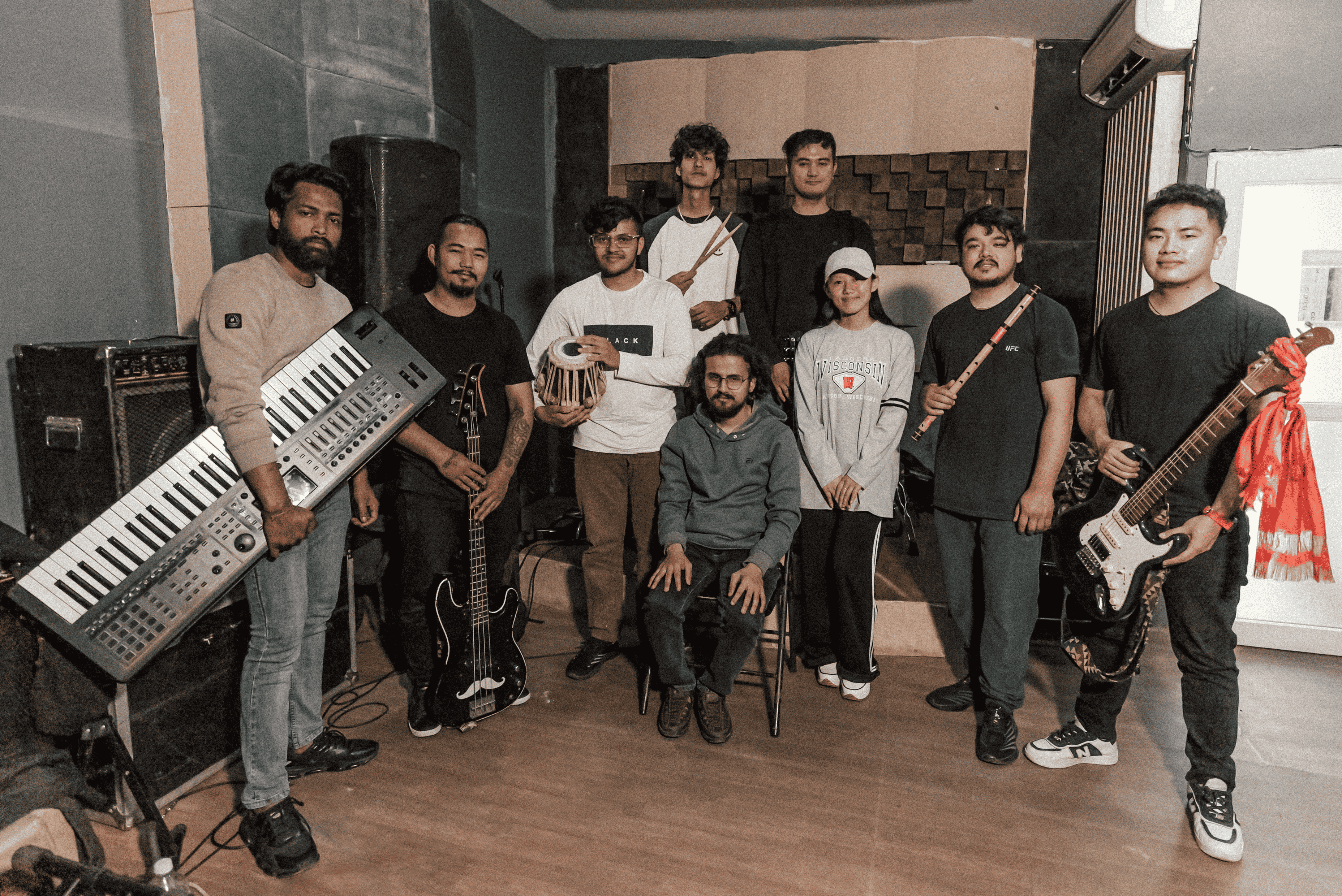There was a time when Sushmita Shrestha, a local of Swayambhu, used to carry a gagri (a water pot) on her waist and a bucket on her other hand to go fetch water from the nearby hiti (a traditional water spout usually made of stone). But, the 57-year-old sees that scene only in her memories now as the hiti near her place, among several hitis of Kathmandu, has dried up.
Yet, for residents like her, a small hope was restored when they heard that the hitis can be revived.
Following the initiative and proposal of the Swayambhu-based Chiva Chaitya Organisation, the hitis of Kathmandu valley were kept on the World Monument Watch list for 2022. This has now further steered the discussion on whether the hitis of Kathmandu can be revived back to their glory.
Stakeholders say the revival is complicated but possible with a few hurdles in between.
A loss of civilisation
Groundwater expert Dibya Ratna Kansakar explains the disappearance of water in the hitis of Kathmandu is closely related to the drying up of groundwater in the city. “The groundwater has dried up because of the haphazard building construction. The whole area has been exploited by human settlement. The foundation of the houses used to be just three to four feet deep in the past, but now, it is up to 10 feet. This is have an impact on the status of hitis of Kathmandu.”
He continues, “Earlier, the houses would be made of soil and brick. But, now, it is all concrete. Another reason for the loss of water at hitis of Kathmandu is the boring water system that has been rampant in the city.”
“Likewise, the construction of gumbas (monasteries) on the hills that have intercepted the groundwater flow in catchment areas there. The roadside is also now concrete, cutting the source of groundwater,” he adds. He argues the historic Sundhara of Kathmandu dried up due to the construction of the Kathmandu Mall nearby.
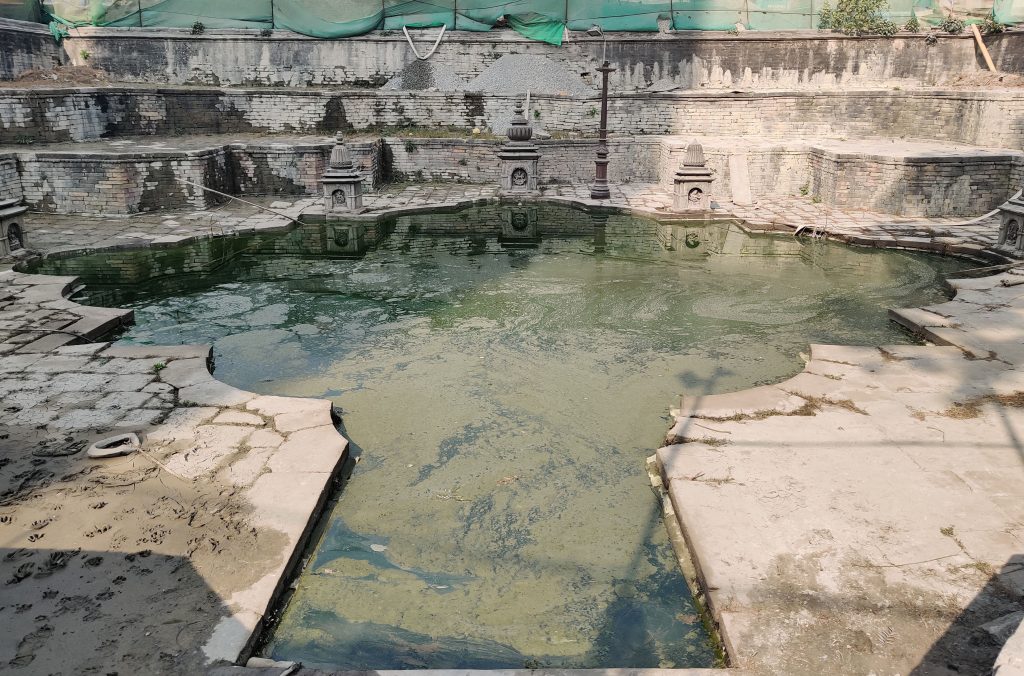
But, it is not a recent problem. The trouble started several years before that. “In the Kathmandu valley, the water pressure was once high. But, in the 1960s, the households were given permission to get the water supply and those who could afford got the water system. This started averting people from the hitis of Kathmandu. In the 1980s, the city saw a surge in immigration of people and so started the competition to build one’s home and then get a private water supply system. “
The Herculean task
As the trend that Kansakar describes has continued unabated, restoring hitis of Kathmandu involves a lot of challenges.
Stakeholders say reviving the hitis first needs knowledge in people, and it has to be dealt with case by case.
Hitis of Kathmandu are generally categorised into two types: gaa hiti (below the ground level, such as Sundhara) and lo hiti (on the ground level, such as hits in Tamsipakha and Yetkha). “If we know the status of the water collected in the ground above (or catchment area) and if it is in a good condition, the hitis can be revived. But if its catchment area has been compromised, we cannot revive it,” Kansakar says.
“Therefore, we have to focus on those hitis of Kathmandu that still have naturally flowing water, and the regulated system. So we have a chance to revive and preserve them.” He says the hiti near the Bajrayogini temple in Sankhu can be such an example.
But, some other hits are already damaged beyond repair. “One in Bhimsensthan or the one in Maruhiti and on the roadside of Swayambhu is all beyond revival.”

Yet, most hitis of Kathmandu can be revived if the local government is committed, according to him.
Jharna Joshi, an architect working in the field of heritage preservation for more than 20 years, also thinks it takes a change in the mindset of political leaders and bureaucrats to revive the hitis of Kathmandu.
“Bureaucrats talk a lot about development and heritage, but there is no output. But, if we work and even if we can revive 25 per cent, that is a great thing.”
Revival with artificial water sources
If bringing back natural water flow is impossible, some people even want to revive the hitis of Kathmandu with artificial water systems. Locals of Chyasal in Patan have done this at one of the hitis there recently.
But, Kansakar is not much impressed with the idea of reviving hitis of Kathmandu with artificial water resources.
“If we are to bring the artificial water system, we have to be clear on two things: whether it is for showing only or getting the actual use of the water resources. If it is the latter, we have to make sure that those living on rent, who cannot afford water, are benefitted from the idea of community tap,” says Kansakar.
Some have argued in the past that reviving the rajkulo, the water network system made with terracotta pipes, can also revive the hitis in the city. But, Kansakar says that it will not revive the hitis of Kathmandu.
“The core Kathmandu city, more appropriately, Ye de areas (from Teku to Bhimsensthan and Thamel and from Tamsipakha to Tundikhel in ancient Kathmandu) were not connected with the rajkulo, rather had different catchment areas.”
Whereas, Lalitpur has better rajkulo connection (from Lele Tika Bhairab to settlement areas) and Bhaktapur.

Joshi, meanwhile, says reviving the hitis is possible everywhere, even those not connected with the rajkulo, the so-called royal canal or the old water pipe system in the valley. “Some 10 years ago, we revived a hiti at Nagbahal in Patan in cooperation with the locals. It was at least 1,000 years old and the cleaning had been planned for decades. But, we finally cleaned the inlet and revived the outlet with proper water flow with its source just 10 to 12 feet deep.”
“So, revival is possible, but for that, people need more information on the hitis and how one can revive them.”
Yet Kansakar says that instead of reviving the hitis through ancient means today, people should focus on better, available technology for the water purification process and build a system that is more affordable. “It might be an unpopular opinion, but we do not really have to go back to the old system. We can be inspired and create a better technologically sound system that is affordable too,” he says.
Things to do
There is so much to do if the heritage sites in question are to be revived, at least the ones that still have the possibility. “We need to protect the watersheds of the hills, for which we need to protect the forest or trees. But, people are not conscious about protecting the trees, they do not feel the need for trees in city areas,” Joshi says.
But not just that, the stakeholders say people need to map out the traditional water system and integrate it into the new building code.
“Building codes are focused rather around heritage sites and height of the new buildings around the sites. But, no discussion or consideration has been made for anything below the ground,” says Joshi. In fact, after the 2015 earthquake, the building codes have been ignored and the heritage sites have been overshadowed by concrete buildings.
Joshi further says, “Discussion around the need for plotting is not enough. We need to realise and discuss more on urban planning.”
Meanwhile, the Chiva Chaitya Organisation is collecting information and intend to prepare an inventory of all the hitis of Kathmandu including the status and whether or not they can be revived, informs the organisation’s Amar Tuladhar.



